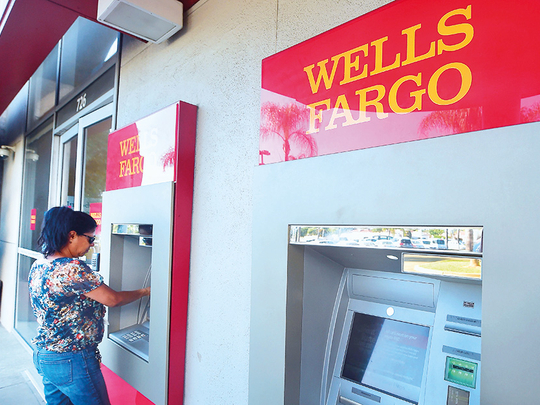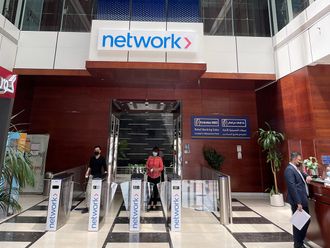
San Francisco: Both sides of Wells Fargo & Co’s $142 million (Dh521 million) settlement over its fake-accounts scandal made last-ditch efforts to salvage the class-action pact after a federal judge voiced misgivings about some of its terms.
Lawyers for the bank and customers submitted new information late Wednesday in an attempt to address US District Judge Vince Chhabria’s concerns that the deal shortchanges consumers and gives the lender protection from other legal claims.
Specifically, Chhabria raised doubts about the adequacy of the settlement Tuesday, less than a week after lawyers for customers released a new estimate that the bank may have opened as many as 3.5 million fraudulent accounts since 2002.
In a ruling, Chhabria asked lawyers on both sides a series of pointed questions about the settlement and gave them until the end of Wednesday to respond.
A hearing is scheduled for Thursday morning, in which he’ll consider preliminary approval of the tentative settlement. Even before the Wednesday deadline, Chhabria submitted an additional 14 themes he said he’d address in court, including the scope of the settlement.
Parallel lawsuits
The latter may further complicate both the bank’s and consumers’ position on the settlement after Chhabria stated his intention to deny requests to halt parallel litigation in other courts.
“That will be for other judges to decide,” he said in his latest submission. “The parties should indicate whether they still believe this court should retain jurisdiction despite this caveat.”
Both sides also fielded questions on their methodology for determining the class size and payouts to various sub-groups, including individuals whose harm was limited to fees charged by the bank when it created false accounts and those whose credit rating was damaged by the creation of unwanted credit cards.
Plaintiffs also clarified their unexpected decision last week to increase the size of the settlement class to as many as 3.5 million accounts from 2.1 million, stating that the increase corresponds to a longer timeline of the fake accounts. That total class could include 2.73 million consumers, according to the latest filing.
“We regret the confusion our briefing caused,” according to the reply from the consumers’ lawyers. The response doesn’t call for an increase in the settlement value, with one exception: should the $142 million deal be insufficient to make consumers whole, the bank will supply additional funds to meet the shortfall, according to the filing.
Calculating losses
Conversely, Wells Fargo stated that it may not be possible to guarantee that all consumers will receive compensation equivalent to their actual harm.
“The proposed allocation methodology goes to great lengths to ensure that compensation for out-of-pocket loss, particularly increased borrowing costs, is adequately addressed,” the bank said in its response to Chhabria’s Tuesday request for information.
The class-action settlement, if approved, would cover reimbursement of wrongly charged fees, credit-damage relief and cash compensation amounting to $40 to $70 per fake account, if each consumer harmed by the bank submits claims. Plaintiffs’ attorneys have capped their fees at 15 per cent of the deal value — up to $21 million of the $142 million settlement.
On Thursday, in addition to arguments from the parties involved in the case, Chhabria will also hear from plaintiffs in similar litigation against Wells Fargo who oppose the substance of this preliminary settlement.
“There’s been no real discovery; there’s no way to know the real extent of the damages,” said Zane Christensen, an attorney for consumers in Utah. “This settlement is entirely based on numbers that come from Wells Fargo’s own admission. We don’t believe Wells Fargo is airing all of its dirty laundry publicly.”
A Wells Fargo representative wasn’t available to comment after the filings were made close to midnight in San Francisco, where the bank is based. An attorney for the plaintiffs didn’t respond to questions about how the second set of questions could affect their position on the settlement.










